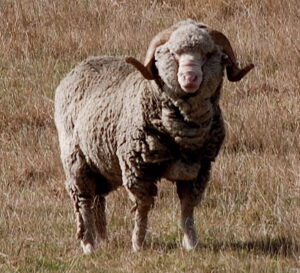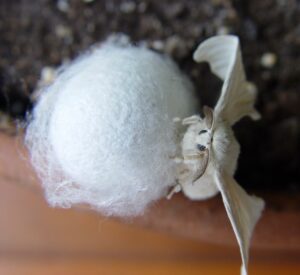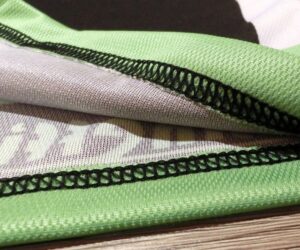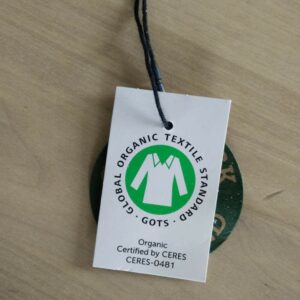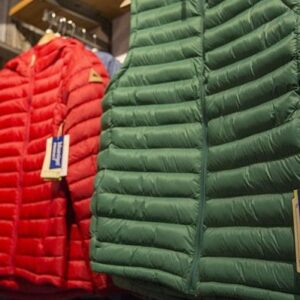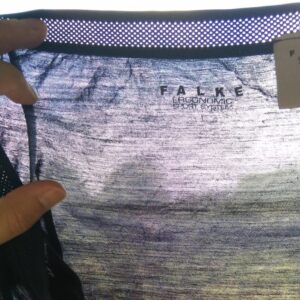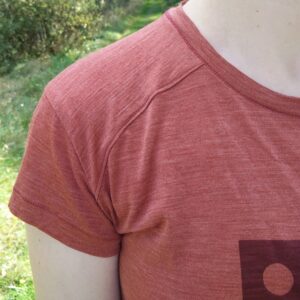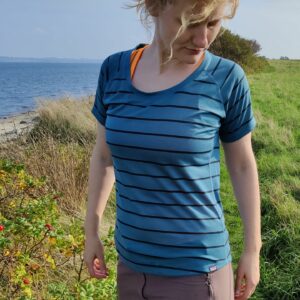As hikers we all get to experience the negative impact of humans in the landscapes we spend our time in – whether it is the pollution of a local lake, an abundance of trash in nature, excessive logging or witnessing how the glacier in a national park gets smaller and smaller over the years. According to the UNFCC, the collective clothing industry is responsible for around 10% of the global greenhouse gas emissions due to its long supply chains and energy intensive production as well as 20% of the global waste water. Furthermore, 85% of textiles eventually get burned as waste or end up in landfills although most of these materials could be reused. The outdoor clothing and apparel industry is of course only a minor contributor in comparison to the ‘fast fashion’ production, but as nature lovers we should make qualified buying decisions in all aspects possible. In the following we will discuss the sustainability issues of the materials most frequently used for outdoor clothing, and which national and international standards you should look for if you want to make sure that your garment has been produced in the most sustainable way possible. That of course also goes for the people who have been involved in the production of the apparel, whether in terms of fair pay or safety issues.
Sustainable Outdoor Clothing Materials?
Cotton
Cotton might be the most common natural textile in the world, but as the cotton plant requires insane amounts of water (10.000 liters to grow one kilo of cotton), it is actually a rather problematic textile in terms of sustainability. If you follow Nail the Trail’s advice about steering clear of cotton clothing for hiking, this is not so big an issue. Otherwise, you should look for labels indicating that the cotton used is organically grown. Two standards to look for are that of the National Organic Program in the States and the Global Organic Textile Standard (GOTS) which not only considers the growing and harvesting of cotton, but the whole production process from farm to factory. The GOTS certification is available for all organic fibers.
Down
Down is the only material obtained from an animal where the welfare of the animal, while being alive, has been the main concern when making certification standards. Several brands use RDS-certified (Responsible Down Standard) down which ensures that the ducks and geese have not been exposed any unnecessary harm in their lifetime. The geese providing the down are otherwise in severe danger of being live-plucked (which can happen multiple times during their lifetime) which brings up the profit per reared goose and/or being force-fed to have their inflated liver used for foie gras. The majority of down derives from China (80%) and Eastern Europe, and there has been speculations about how closely manufacturers there follow the Responsible Down Standard, although certified. In response, Patagonia has for example made its own ambitious down standard called the Traceable Down Standard which also adheres to the Global Traceable Down Standard.
Leather

Leather hide by Cinnamon Cooper
Apparel materials obtained from animals (down, suede and leather of most sorts) are mainly side-products of meat production – which is good in the sense that the dead animal is being utilized as much as possible. But the ever-increasing meat production is of course problematic in itself due to the environmental impact, both in terms of the emission of various gasses from livestock and the carbon footprint. The latter also includes cutting down forest for grazing and pasturage areas. When it comes to outdoor apparel, leather is used in rather small quantities as it is mainly being used for hiking boots (bovine leather) and hiking gloves (goat leather). Both types of leather come from livestock reared for meat, and in that sense goat is by far the more sustainable type of meat. There is unfortunately no standard for leather indicating that the animal providing it has been treated well while alive; instead the standard provided by the Leather Working Group (LWG) certifies that the leather has been produced sustainable with regards to consumption of water, energy and chemicals. Namely the latter has importance as the production of leather and suede from raw animal hides involves some harsh chemicals and dyes, which should be handled with care both during the production process and afterwards as rather toxic waste.
Merino Wool
Merino sheep are primarily being reared for their wool rather than their meat and can graze outside all year which makes it a renewable and more sustainable natural fiber. Nevertheless, especially Australian Merino sheep are often exposed to the painful procedure of mulesing as a means to protect them from flystrike, a parasitic infection and can also be treated inhumanely in other ways. The Responsible Wool Standard (RWS) certifies that the sheep are treated properly and that the health of the lands used for grazing is preserved. Merino wool garments can also be GOTS-certified. There is, however, another sustainability issue with Merino wool; for all the resources which go into making 100% Merino wool garments, they have a limited durability – especially those of thinner fabrics which are the most popular. Some manufacturers have been making up for this by collecting worn-out garments and recycling the wool, for example Patagonia and SmartWool, but you yourself can do a lot to prolong the life of your Merino garments by caring for it properly and repairing it when holes start to appear (read how to here).
Silk
Silk is rarely used in hiking clothing in spite of its good qualities for base layer materials, for example by increasing the durability of the Klattermusen Eir shirt (70 % Merino, 30% silk). On the other hand, it is often utilized for sleeping bag liners due to the same qualities. The protein fiber of silk is produced by various insect larvae to form cocoons, but the domesticated bombyx mori (the mulberry silkworm) produces the bulk (around 90%) of commercial silk. The caterpillars are being killed by the stab of a needle or being put in boiling water before their cocoons are unraveled for meters of raw shiny silk thread. The dead caterpillars are, however, not discarded but processed into a popular Asian snack. If left alive to exit the cocoon on their own, the caterpillars-turned-moths would make holes in the cocoon and break up the silk thread in several smaller pieces which causes durability issues when making a textile from this so-called Peace Silk. Except for the killing of caterpillars, which may appall some, silk production can be executed in a very sustainable manner, but as it is a labor-intensive material it has often been connected to exploitation of workers including child labor, and furthermore dyed with problematic substances. If you want to make sure that garments or sleeping gear containing silk fibers are produced in a sustainable manner, you can for example look for the Global Organic Textile Standard (GOTS). There are, however, also exciting biotech experiments to create synthetic silk protein for the textile industry, inspired by silk spiders and made from yeast, sugar and water – such as Bolt Threads’ Microsilk.
Synthetic Materials
Compared to the materials above, which involve a lot of dead animals and a heavy use of natural resources, you might think that a safe haven can be found in synthetic materials. But polyester, nylon and other synthetic materials are petroleum-based, which is a non-renewable carbon-intensive resource. Polyester is the most used fiber for making clothes world-wide (approximately 50% of all clothing) and takes more than 70 million barrels of oil per year to produce. Some manufacturers have been taking steps to make polyester out of recycled bottles and plastic waste, but it still only makes up for a modest percentage of the overall polyester production and has its limitations. Hopes are that 20% of all polyester will be derived from recycled plastic by 2030. However, in 2016 it became clear that all synthetic clothing has one big, previously overlooked sustainability issue in common: The shedding of microplastics when washing. These invisible microfibers are currently being washed out of synthetic garments, passing through water waste plants and ultimately ending up in the world’s oceans as neither washing machines nor water cleansing facilities are constructed to filter them out. As pointed out by Patagonia in this informative article, the solution will likely be three-fold: Developing textiles less prone to shedding and adding appropriate filters and waste solutions for washing machines and water waste plants. The article also gives advice for diminishing the shedding of microplastics of your own synthetic garments.
Human Labor
The Foxconn suicides and the Rana Plaza disaster displayed with all clarity that the safety and well-being of the millions of Asians working to supply the Western world with a never-ending flow of consumer goods, have not been major concerns for the people owning the production plants and thus not for the Western brands using them. It has never been a secret that the Asian workers are not well-paid, but these and other incidents in the past decade have shown just how unprotected workers are, in all meanings of the word. While the environment-focused bluesign certification just ensures the occupational health and safety of workers, the Global Organic Textile Standard (GOTS) certification furthermore has social criteria such as living wages, non-discrimination, and prohibiting child labor and excessive working hours. The Fair Trade stamp is similarly focusing on both the safety and sustainable livelihood of the workers, but is mostly known from the coffee and food realm. It is, however, being increasing applied to garment production as well.
Conclusion
As you can see there is no material for hiking clothing which is 100 % unproblematic in terms of sustainability. But as hiking nude is hardly the way forward (!), it’s better to instead consider how you can reduce the environmental impact when you buy, wash and dispose of your outdoor apparel. Read more in our article on the topic with plenty of tips and tricks.



